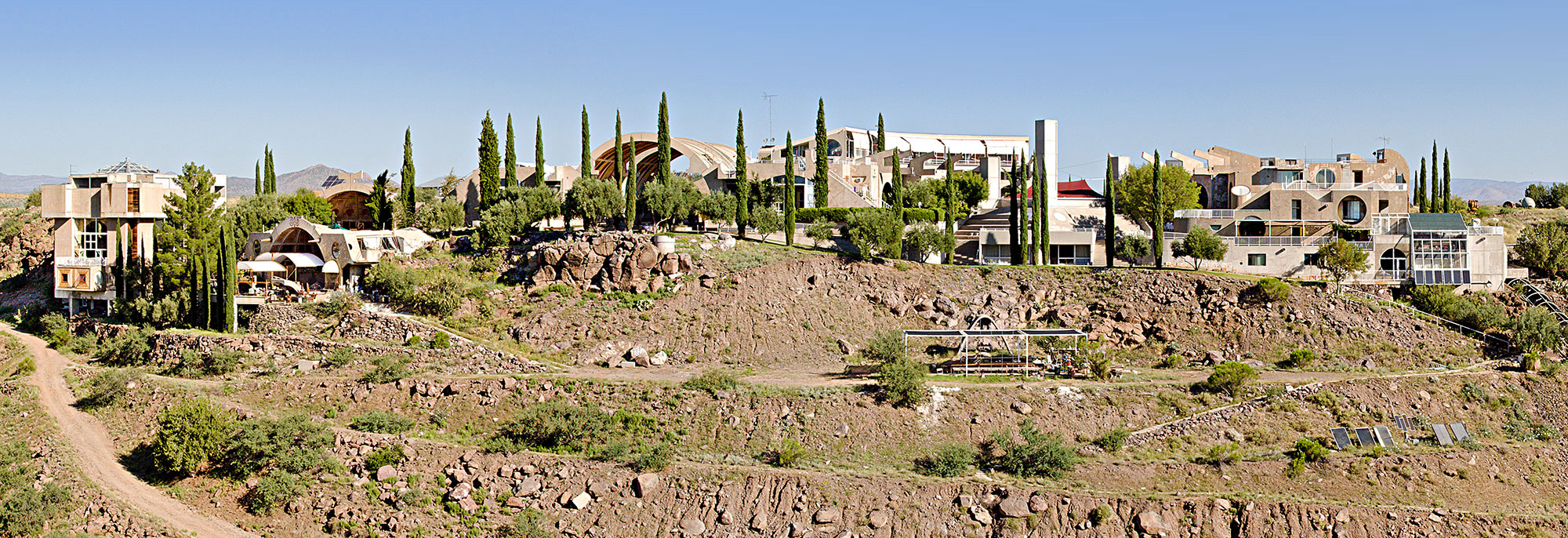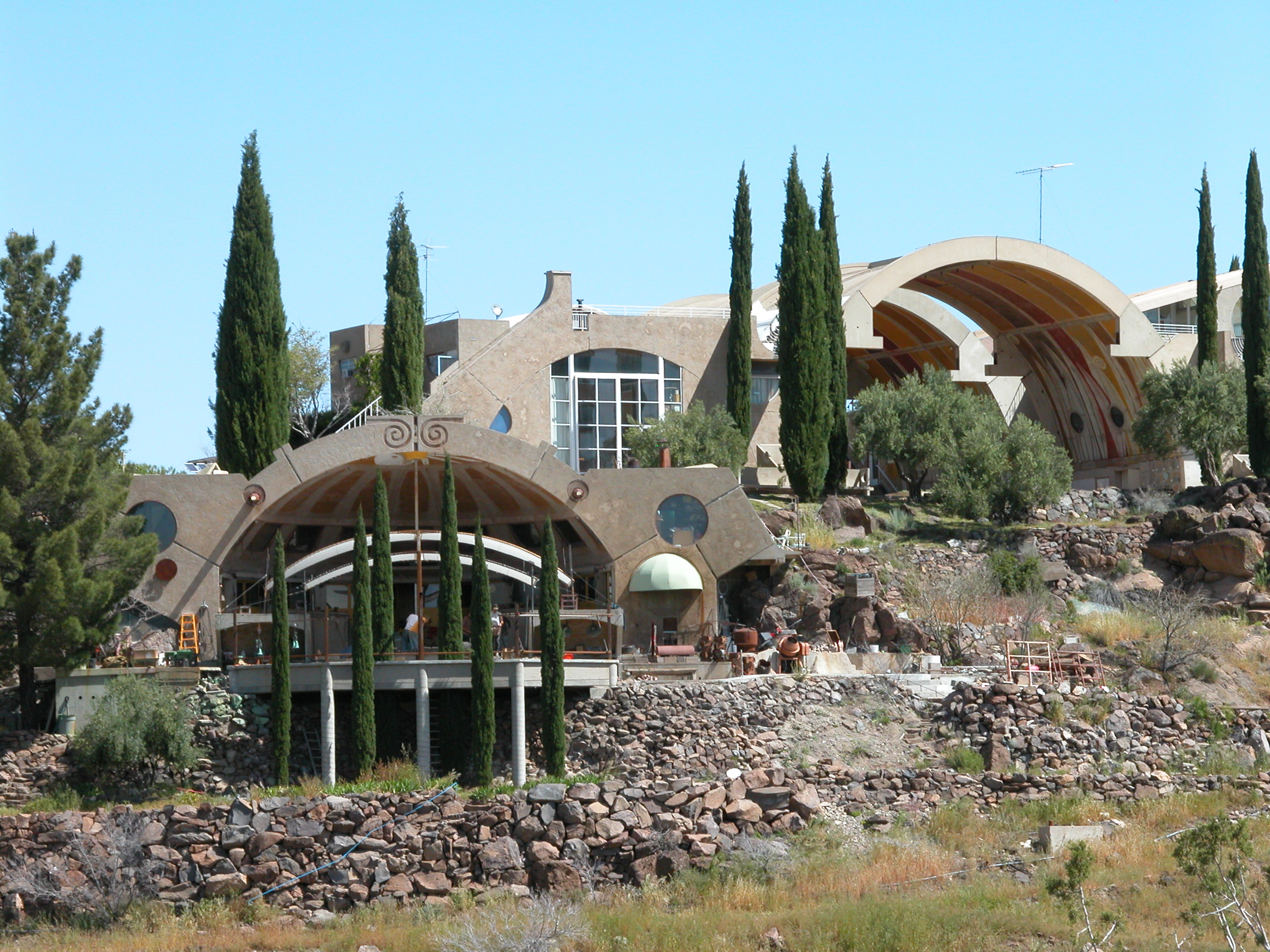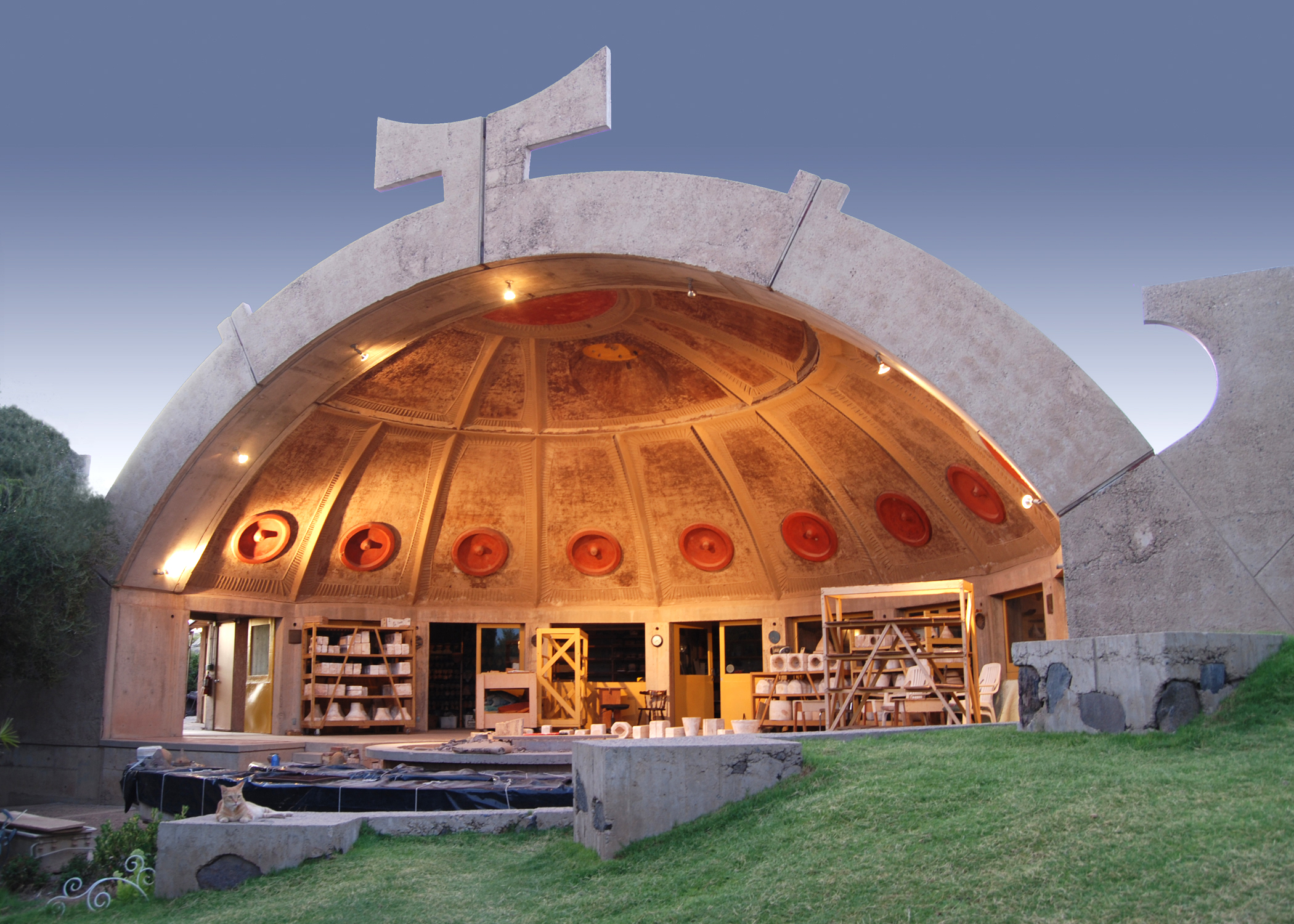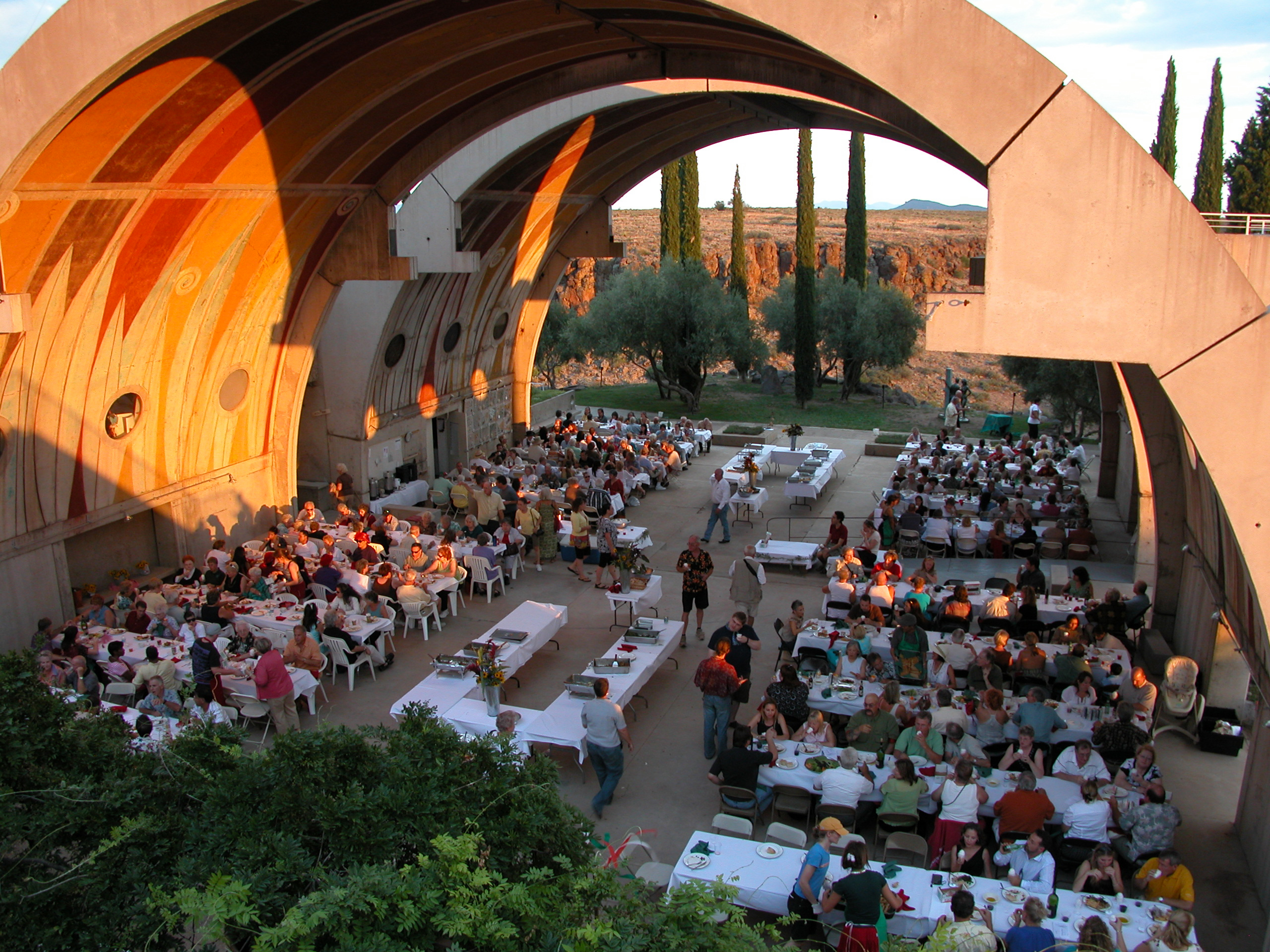
By Bharat Venkatesh
You may have heard of Arcosanti, the “urban laboratory” located 70 miles north of Phoenix. Intended to be a demonstration of the late architect Paolo Soleri’s ideas about architecture and city building, it began as an ideal that reimagined the relationship between humans and the natural world.
“It was the time of the first Earth Day, the end of the war in Vietnam, Americans were landing a man on the moon, a moment of great student unrest in the U.S. and in Europe… a very different era – though not so long ago – in which everything seemed possible,” said Jeff Stein, architect and co-president of the Cosanti Foundation.
Arcosanti may not fit in with your impression of the future, and one reason for this could be that construction on the project began almost 50 years ago in 1970. The dissonance could be because the expectation is that of a completed city; but Arcosanti is only a “base camp” exploring Soleri’s ideas, an evolving process that continues to re-examine the original models and develop derivations based on the original design principles. Another possible explanation could be that the vision used to build the city differs from what we perceive as modern or futuristic.

Arcosanti follows the principles of “Arcology,” a mashup of the words Architecture and Ecology, essentially a methodology that integrates urban design and life on Earth. Cities play a central role in the lives of humans and in our future, especially considering that over half the human population now lives in them. As such, Arcosanti’s design is of a three-dimensional, dense, integrated and walkable urban landscape, akin to all the other forms of organic life on Earth. Unlike other cities, it is built “up” rather than “out,” made compact rather than sprawling, and interacts with the Earth’s ecosystem sustainably rather than separating from it.
“Arcosanti has developed from a question: ‘What if…?’ What if the city were the newest form of organic life on Earth? If that were true, or even if cities were able to insert themselves seamlessly into the web of the rest of organic life, their forms would need to be designed the way all the other organisms are: compact, complex, three-dimensional,” Stein said.

The outside shell of the ceramics apse was shaped over a form carved of fine silt. The apse faces south, allowing for shading in the summer from the sun straight overhead. In the winter month the sun is at a low angle, warming the interior of the apse.
As far as sustainability and energy efficiency goes, Arcosanti’s architecture does most of the work. With around 85,000 enclosed square feet at Arcosanti at present, it uses about 1/5 the electricity that a conventional city would per square foot. The shape and structure of the buildings gather the sun’s heat in winter when it is most required, while providing shade during the summer. The compact design of the city also allows everything you need to be within walking distance, eliminating the need for cars. Modeled to use as few resources as possible, Arcosanti also takes the long view instead of purely focusing on energy efficiency.
Apart from the architectural aspects of Arcosanti, its compact construction also meant that there would be closer interaction between its inhabitants and a communal style of living. With people of all ages from all around the world continuing to take part in and learn from the construction effort by enrolling in the Arcosanti Workshop Program, the community is active throughout the year.

Fortunately, Soleri’s strong belief that the performing arts should be central to urban life ensured that Arcosanti possesses a number of entertainment options, with each building doubling as a stage for performance. Due to the city’s architecture and its inhabitants’ willingness to show how it works in real life, Arcosanti is now one of the hubs for performing arts in the state.
Arcosanti is not perfect, and it is probably not the city of the future either. It is a city intended to demonstrate that humans can live in harmony with the ecosystem of the planet of which we are a part, a city that Stein hopes will “inspire research that can foster a kind of cultural transformation in that direction.” As its epithet “urban laboratory” aptly conveys, Arcosanti is an ongoing experiment that seeks to show the values of ecological accountability, limited footprint for building, and resourcefulness. We can learn much from it.
For more information about Arcosanti as well as upcoming performing arts events, visit arcosanti.org
.
Read more environment articles at greenlivingaz.com/environment.





